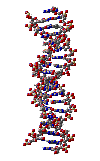|
Appetite – it’s a brain thing
The regulation of body weight and energy balance in animals depends on the central nervous system capacity to read the body’s metabolic state and respond accordingly. But how does the brain process and integrate information to regulate feeding behaviour in order to sustain the energetic needs of the organism? In an article now published on the journal Neuron, scientists from the US and Portugal study the brain activity of rats during a feeding cycle - consisting of an episode of hunger, satiety and hunger again - and found that, while individual neurons respond to parts of the cycle, the pooled activity of the neurons in entire brain areas is always high throughout hunger, diminishing after the animal is fed and satiated, and again increases when the animal is hungry again, a variation that most probably underlies the activation of the mechanism associated with feeding motivation in these animals.
For survival, the individuals of a species have to carry vital functions such as eating, drinking, having sex or present maternal behaviour. To assure this happens, during evolution, certain areas in the brain have developed to provide strong feelings of pleasure as a “reward” for carrying out these vital functions.
A typical example is the motivation to eat, which is balanced between states of hunger - when eating is accompanied by a sensation of pleasure - and satiation - when the brain senses a biochemical change and stops the feeding process.
Previous research has shown that, during hunger, several areas in the brain seem to show increased neural activity which, after eating, is reduced. These experiments, however, were limited because, on one hand the animals were never allowed to eat freely as the food was controlled by the scientist, and on the other hand a whole cycle of hunger, satiety and new episode of hunger was never fully studied.
Trying to understand better the brain process that leads to the motivation to start and end the feeding process Ivan E. de Araujo, Sidney A. Simon and colleagues at Duke University Medical Center in North Carolina, US and at Porto University, Portugal decided to look at rats’ brain activity in a more ”natural” experimental situation – the animals were allowed to decide when to start and end eating, and their brains were analysed throughout entire hunger-satiety-hunger cycles.
The researchers measured neural activity in four brain areas known to be associated with feeding motivation - lateral hypothalamus, orbitofrontal complex, basolateral amygdale and insular cortex - during a full feeding cycle in which the rats were hungry, fed on sugary water until satiated and then grew hungry again. The activity of individual neurons within these areas was also analysed. The levels of glucose and insulin in the blood were also measured during the experiments.
By correlating the different stages of feeding (hunger - satiety –hunger) with brain activity, the researchers found that the majority of individual neurons only responded to a particular metabolic state (for example low or high glucose levels but not to both) within the full feeding cycle. By contrast, the whole activity of any of the four brain areas analysed, consistently increase during the hunger episodes and decrease during satiety allowing an accurate prediction of the duration, start and end of the different stages. These results show that the mechanism regulating feed motivation is distributed across different brain areas, forming a connected circuit that shares information on sensorial and motivational aspects of feeding collected from a multitude of individual neurons.
Araujo, Simon and colleagues also found that, from the four brain areas studied, lateral hypothalamus seemed to be the most important for eating motivation, as its neural activity had the highest correlation with the changes within the feeding cycle. This result agrees with previous observations where single lesions in this brain area can automatically lead to radical changes in appetite whether leading to hyperphagia – abnormally high food intake or, hypophagia- reduced food intake. This research contributes to a better understanding of the brain mechanic behind feeding stimulus, a particularly important issue in view of the current world epidemic of obesity.

1 Neuron 51, 483–494, August, 2006 “Neural Ensemble Coding of Satiety States”
Authors of the original paper
|
In collaboration with the Observatório da Ciência e do Ensino Superior (OCES)
Financed by the Fundação para a Ciência e Tecnologia (FCT) |





